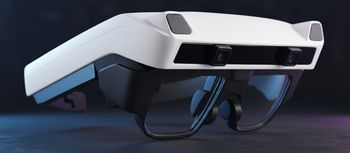
Unexpected uses for AI: patient communications
Artificial intelligence is not an innovation that we may see someday in the future. It’s here now
Technology has impacted society in countless ways-and the healthcare industry is no exception. One emerging area of technological advancement is artificial intelligence (AI). We all know that it is being used in the medical industry in ways that seem like the science fiction novels of days gone by. From the use of AI in medical research to robot-assisted surgery or even with systems that can detect cancer, there are a variety of benefits derived from AI in the clinical setting. In fact,
Not all of this is going to address clinical aspects of the healthcare industry though. We are also seeing AI transform the way patients and healthcare systems interact and communicate with one another. Using the technology in patient communications has the potential to fuel a more meaningful connection between patients and providers.
It’s estimated that by 2020,
Artificial intelligence drives organizational efficiency
Through the help of AI, mundane issues that take up too much time on the part of healthcare workers can be greatly reduced. While their chatbots are busy answering questions from patients about things such as facility hours, appointment times, medication issues, symptom checks, nutrition, and so on, medical professionals are able to spend their time where it really matters. Additionally, with AI, patients will be able to get their questions answered without ever needing to speak with someone, reducing pressure on overstretched healthcare systems, where the
AI delivers the “wow” factor to patients
While people act differently in when it comes to making decisions as a patient compared to a consumer, they do have one commonality at heart. They want AI and other cutting-edge technology as a part of their healthcare experience. In fact, consumers are
Artificial intelligence does not negate the need for the human touch
Some healthcare professionals are leery to jump into the AI realm, fearing that the loss of the human element could lead to dissatisfied patients. This is why it’s important when implementing any technology to find the right balance between automation and human interaction. At some point in the healthcare process, many patients will need to speak with an actual person within the healthcare organization. Obviously, there will be patients who need to be seen, questions that can’t be easily resolved virtually, and people who just need the soothing touch of humanity.
To achieve this balance, when leveraging AI as part of the patient experience, try to use the technology to automate those tasks and questions that unnecessarily take healthcare professionals away from the patients in front of them and not to replace needed patient interactions. Wondering which interactions require the human touch? The key is to always keep the patient and their needs at the forefront of your processes. This will help ensure that you are always giving your patients the best experience possible.
Artificial intelligence in healthcare is not an innovation that we may see someday in the future. It’s here now. Healthcare organizations need to recognize that the implementation of AI technology is not only a great way to streamlines processes and deliver great care, but it is critical to keeping up with the competition now-and for years to come.
Jim Higgins is the founder & CEO of
Newsletter
Stay informed and empowered with Medical Economics enewsletter, delivering expert insights, financial strategies, practice management tips and technology trends — tailored for today’s physicians.



















